Image Archive
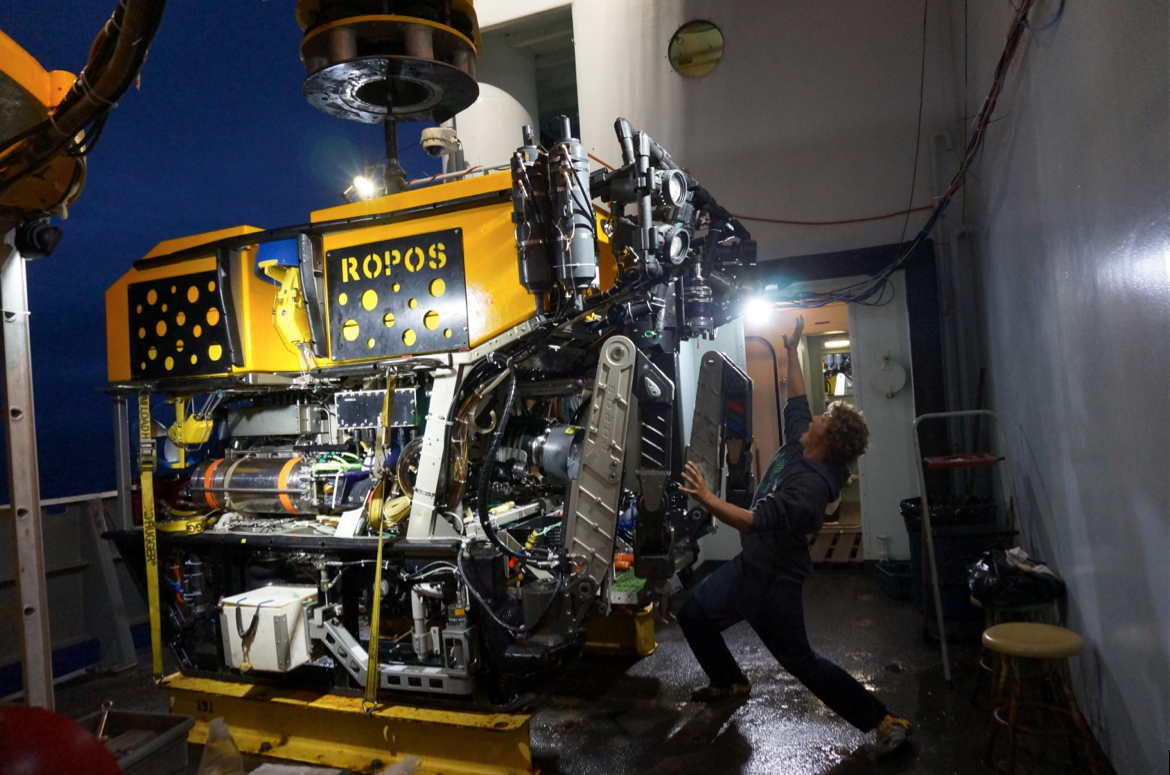
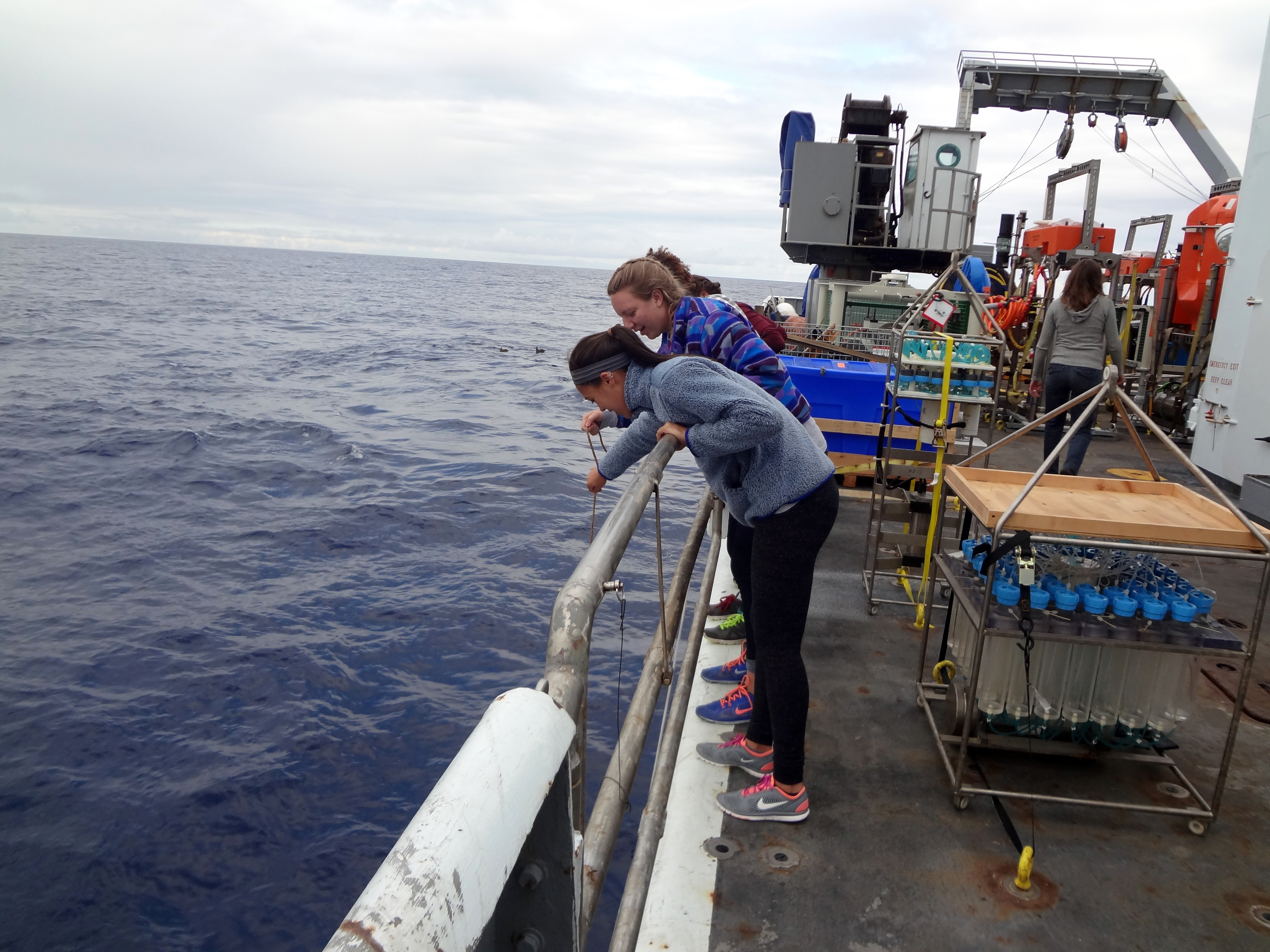
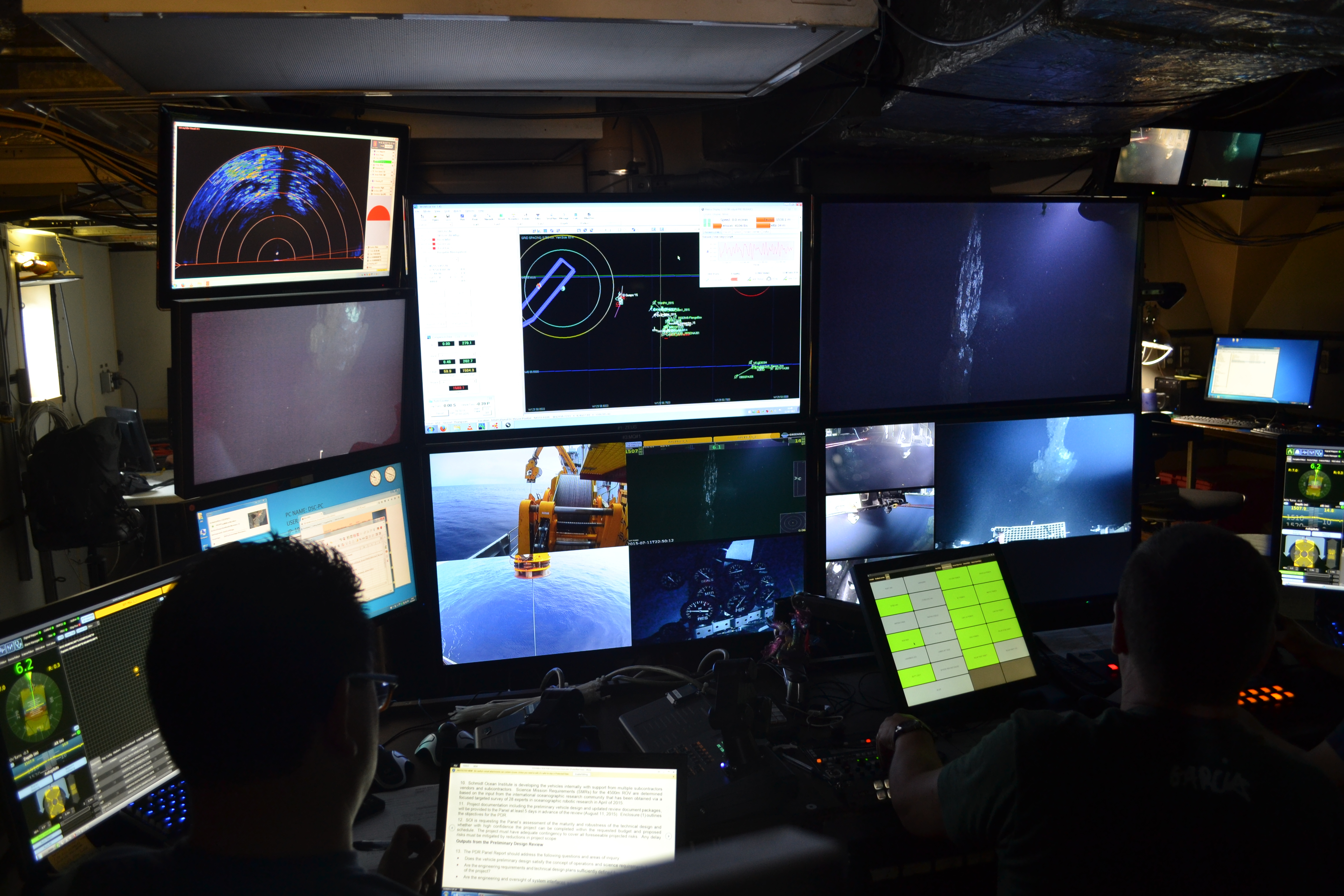

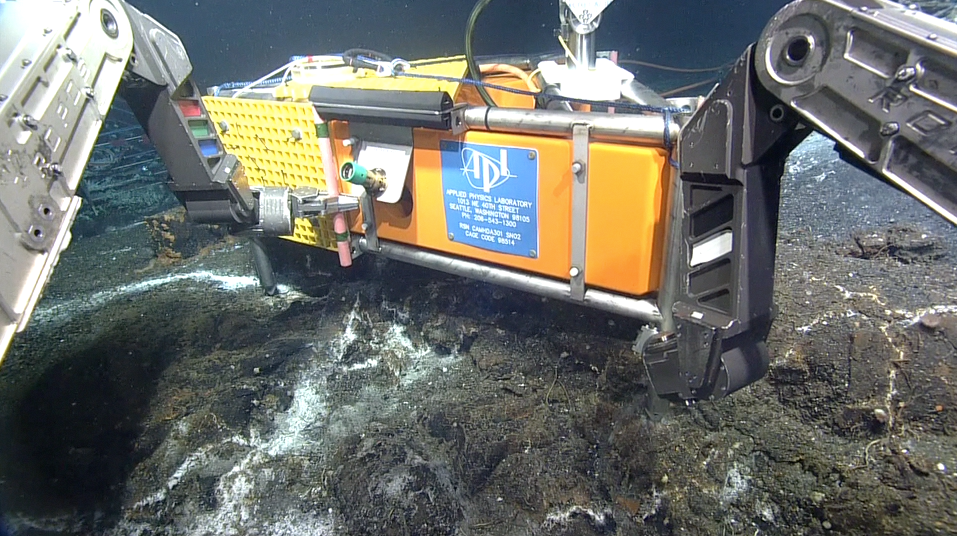








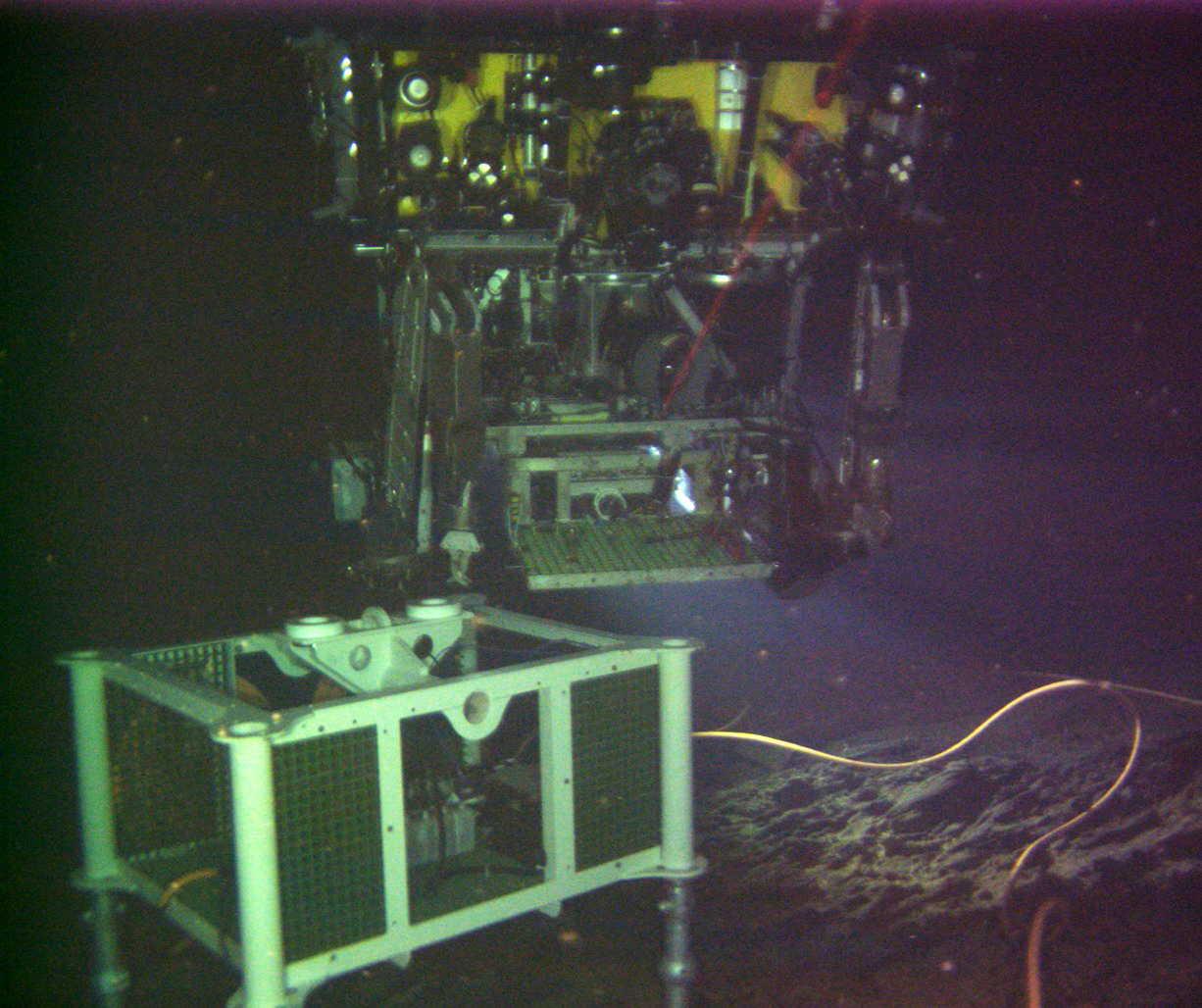





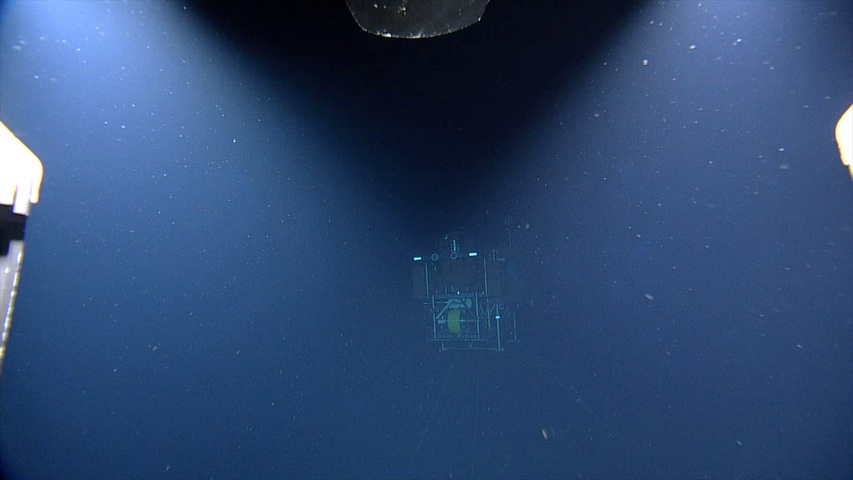









Jesse getting attacked by ROPOS (Remotely Operated Platform for Ocean Science).

Students onboard the R/V Thompson collect velella velella (by-the-wind-sailors) off the starboard side during Leg 1 of the Cabled Array VISIONS'15 expedition. Credit: Mitch Elend, University of Washington.

The ROPOS control room onboard the R/V Thompson as it works at the 18 m tall (59 ft) actively venting chimney called El Guapo in the International District Hydrothermal Field. Credit: Mitch Elend, University of Washington, V15.

A first glimpse of the shallow winched profiler coming out of its docking station at the base of Axial Seamount. NSF/OOI/UW/ISS; Dive R1842; V15.

1835junk

1834junk

1833junk

A digital still camera, mass spectrometer, and fluid and microbial DNA sampler installed at the El Gordo hydrothermal chimney, International District Hydrothermal Field, Axial Seamount. A small, 1-day old chimlet sprouts from the 280°C, gas-rich vent called Dive in the International District Hydrothermal Field. NSF-OOI/UW/ISS; Dive R1839; V15.

Collapse basins marked by columns, drainback features, and arches are common features in areas where lava ponded and spilled rapidly over the seafloor in 2011. A small, 1-day old chimlet sprouts from the 280°C, gas-rich vent called Dive in the International District Hydrothermal Field. Credit: UW/NSF-OOI/CSSF; ROPOS Dive R1839; V15.

Emily Peter

Ian Black

A small, 1-day old chimlet sprouts from the 280°C, gas-rich vent called Dive in the International District Hydrothermal Field. Credit: UW/NSF-OOI/CSSF; ROPOS Dive R1839; V15.

A huge rattail, ~ 5 feet in length, swims slowly in front of the ROV ROPOS near the International District Hydrothermal Field at a depth of 5000 ft beneath the ocean's surface. This area has a higher abundance of these fish than observed elsewhere in the caldera, perhaps because of the larger size of the vent field and hence food source. Credit: UW/NSF-OOI/CSSF; ROPOS Dive R1729; V15.

The newly installed digital still camera at the El Gordo vent within the International District hydrothermal field catches ROPOS above the mass spectrometer. Credit: NSF/OOI/UW, V15.

r1831highlights-poster

Malea and Diana laugh, recognizing they both dressed alike during a morning on the R/V Thompson expedition. Credit: Ed McNichol, V15.

A small shark swims past the mooring platform at the base of Axial Seamout - the platorm is ~ 600 ft beneath the ocean's surface. Credit: NSF-OOI/UW/ISS; V15.

The ROPOS control room onboard the R/V Thompson is a magical place for many where we get to see parts of the ocean never before seen, and first of their kind operations.

A school of small fish greeted the ROV ROPOS during our first visit to this ~ 600 ft deep platform since it was installed in 2014. Credit: NSF-OOI/UW/ISS; Dive R1832; V15.

r1832highlights-poster

A titanium 'cap' is placed on the top of El Gordo by ROPOS, which focuses the diffuse fluid so that a fluid and microbial DNA sampler can get hydrothermal fluids samples largely undiluted by seawater. The fluid-DNA sampler is in the background. Credit: NSF-OOI/UW/ISS; Dive R1836; V15.

The RO ROPOS holds a 'IGT' gas tight bottle in the orifice of the 280°C chimney called Diva. The high temperature fluids exiting the seafloor at this anhydrite-rich (CaSO4) vent contain the highest carbon dioxide concentrations at Axial Seamount. Credit: NSF-OOI/UW/ISS; Dive R1836; V15.

Pyconogonids are abundant on many sulfide structures in the vent fields within the caldera of Axial Seamount. These 8-legged anthropods are commonly found in areas where venting has stopped, leaving variably oxidized edificies. Here, they are associated with snails an a small scale worm ~ 1 cm; in length. Credit: UW/NSF-OOI/CSSF; ROPOS Dive R1836; V15.

Kadijah Homolka models a gumby suit during the Leg 1 safety meeting.

An Osmotic fluid sampler is installed in a small diffuse flow site hosting abundant tubeworms, limpets, and palm worms in the ASHES hydrothermal fluid. When recovered next year, the fluids this sampler host will provide information on how vent fluid chemistry changes over time. The nozzle iis installed inside a triangular 3D thermistor array is Credit: UW/NSF-OOI/CSSF; ROPOS Dive R1835; V15.

A lush community of vibrant red tube worms grows on a 1 m tall black smoker chimney in the ASHES hydrothermal field. The tube worms, which are hosted in white housings about the diameter of your small finger, are intergrown with brown palm worms.Credit: NSF-OOI/UW/CSSF; Dive R1835; V15.

A new high definition camera was installed at the hydrothermal vent called 'Mushroom' in the ASHES hydrothermal field atop Axial Volcano. The camera, built by the UW Applied Physics Lab, was tested today and streamed live HD imagery >300 miles back to shore from a water depth of >5000 m. Credit: Credit: NSF-OOI/UW/ISS; Dive R1835; V15.

A side view of the 12 foot-acoss Shallow Profiler platform on a 2700 m-tall, 2 legged mooring with an instrument package in the foreground hosting acoustic doppler current profilers, a digital still camera, and a variety of chemical and biological sensors. The 'head' of the shallow winched profiler science pod rises above the platform in the background. Credit: NSF-OOI/UW/ISS; Dive R1834; V15.
- Anemone
- Animal
- Arthropod
- ASHES
- Axial
- Axial Base
- Axial Biology
- Axial Caldera
- Bacteria
- Basalt Lava
- BEP
- Biofouling
- biolgoy
- Biology
- Camds
- Camera
- Camhd
- Central Caldera
- Ciliates
- Cnidaria
- Coastal Biology
- Crab
- Deep Profiler Mooring
- Dive Highlights
- Eastern Caldera
- Echinoderms
- Endurance Array
- Engineering Team
- ENLIGHTEN 10
- Exploratorium
- Fish
- Geology
- HD Camera
- HPIES
- Hydrate Ridge
- Hydrates
- Hydrophone
- Hydrothermal Vents
- Illustration
- Inshore 80 Meters
- Instrument
- International District
- J-BOX
- Jason
- Jellyfish
- Junction Box
- K12
- Lava
- Mollusk
- Moorings
- Nodes
- Nudibranch
- Octopus
- OOI
- Oregon Offshore
- Oregon Offshore 600 m
- Oregon Shelf
- Oregon Slope Base
- People
- PN1B
- PN1D
- Polychaetes
- PPSDN
- Primary Node
- RASFL
- ROCLS
- ROPOS
- ROPOS Dives
- ROV Team
- RV Revelle
- RV Sikuliaq
- RV Thompson
- Salp
- Sample
- SC13
- Science Team
- Sea Cucumber
- Sea Star
- Sea Urchin
- Seafloor
- Seismometer
- Sensors
- Shallow Profiler Mooring
- Shark
- Shipboard
- Shore Station
- Slope Base
- Smoker
- Soft Coral
- Southern Hydrate Ridge
- Sponge
- Squid
- Students
- Students & Guest Participants
- Tmpsf
- Tubeworms
- VISIONS 11 Leg 1
- VISIONS 11 Leg 2
- VISIONS 11 Viewers
- VISIONS 13
- VISIONS 14
- VISIONS 15
- VISIONS 16
- VISIONS 17
- VISIONS 18
- VISIONS 20
- VISIONS 22
- VISIONS 23
- Visualization
